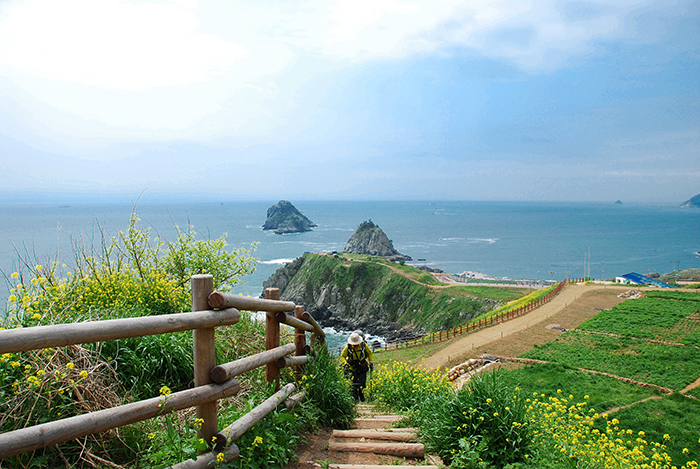
The Haeparang Trail is Korea’s longest walking trail, stretching 770 kilometers from Busan in the south to Goseong in Gangwon-do Province in the north.
The Haeparang Trail is now waiting adventurous trekkers, as the trail construction, maintenance and repair program along its entire length has just been completed. The name “Haeparang” implies "a trail where people can walk along while appreciating the rising sun over the East Sea and the deep blue sea."
The 770-kilometer trail is composed of 10 sections, each of which is composed of three to six individual courses. Nonetheless, visitors to all Haeparang Trail courses can enjoy not only breathtaking scenery decorated with the rocky coast, but also forest walks that allow you to breathe in clean and fresh air.
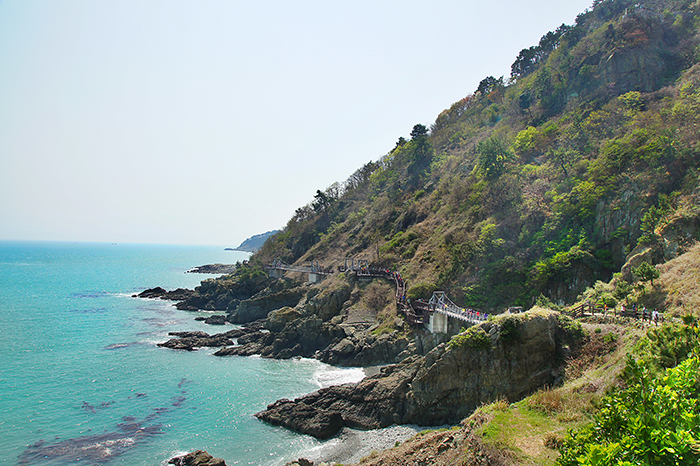
While walking along the trail's Course No. 1, travelers can enjoy picturesque scenery created by the sea, mountains, sky and cliffs along the Igidae-gil in Busan.
Course No. 1 begins at the southern end of the Haeparang Trail at Oryukdo Haemaji Park in Busan. From there, it takes about six hours to complete the 17.8-kilometer course while passing the Dongsaengmal scenic point, the Gwanganri Beach, the Nurimaru APEC House and the port of Mipo.
The overall Haeparang Trail is composed of 10 sections. First off, Busan has four courses, from No. 1 to No. 4. Ulsan stretches from course No. 5 to 9, Gyeongju from course No. 10 to 12, and Pohang from course No. 13 to 18. The section around Yeongdeok goes from course No. 19 to 22. Uljin covers course 23 to 27. The Samcheok-Donghae sections include course No. 28 to No. 34. The Gangneung section goes from No. 35 to 40. The Yangyang-Sokcho section is from No. 41 to 45, and, finally, the northern town of Goseong concludes with courses No. 46 to 50.
The Gyeongju section -- north of Ulsan and south of Pohang -- connects Naa Beach and Gampo. Along the courses there, you can see historic relics from Silla (57 B.C.-A.D. 935), such as the three-story stone pagoda at Gameunsa Temple and the Underwater Tomb of King Munmu (626-681).
In the Uljin section, visitors can enjoy a spa at the Baegam Hot Springs, which got their name back in Silla times, and enjoy some lovely seafood, such as king crabs, at Hupo Port where the Uljin Snow Crab Festival is held annually.
If you choose the sections in Gangwon-do Province, Course No. 45 is a must. You can enjoy North Korean cuisine from Hamgyeong-do Province, local specialties in particular, while enjoying your trekking, as this course weaves through the Abai Village (아바이마을), 5.5 kilometers from the Seorak Sunrise Park. Many of the families of village residents were refugees who fled their homes in Hamgyeong-do Province during the Korean War. Must-eat dishes here include ojingeo soondae (오징어순대), a squid stuffed with a mixture of clear noodles, tofu and vegetables, the naengmyeon (냉면), or cold noodles, and seasoned sliced pollock (명태무침).
More information about the Haeparang Trail is available at its homepage in five languages: Korean, English, Japanese, and Chinese.
http://haeparang.org
By Yoon Sojung
Korea.net Staff Writer
Photos: Korea Tourism Organization, Yonhap News, Institute of Traditional Korean Food
arete@korea.kr
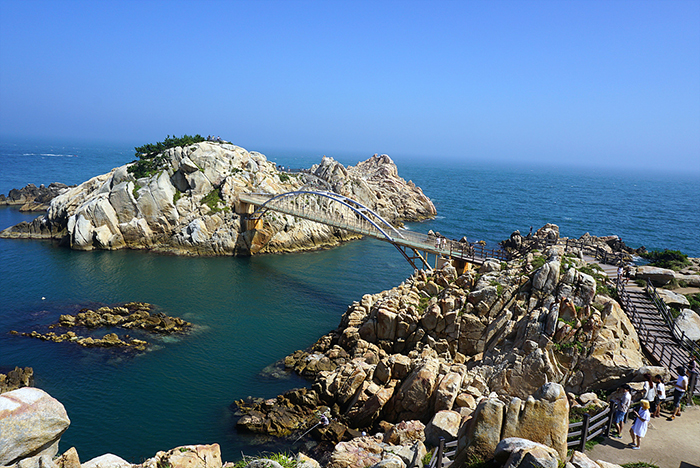
Trekkers along the Haeparang Trail's Course No. 8 enjoy the view from Daewangam Park in Ulsan.
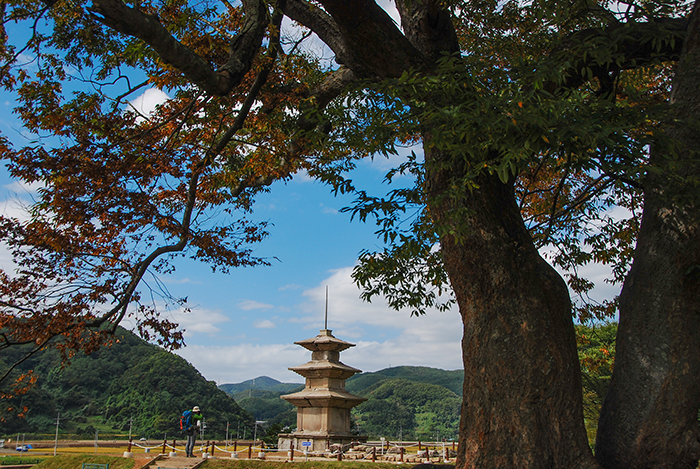
Along the Gyeongju section of the Haeparang Trail, visitors can see historic remains from Silla times, such as the three-story stone pagoda at Gameunsa Temple, part of Course No. 11.
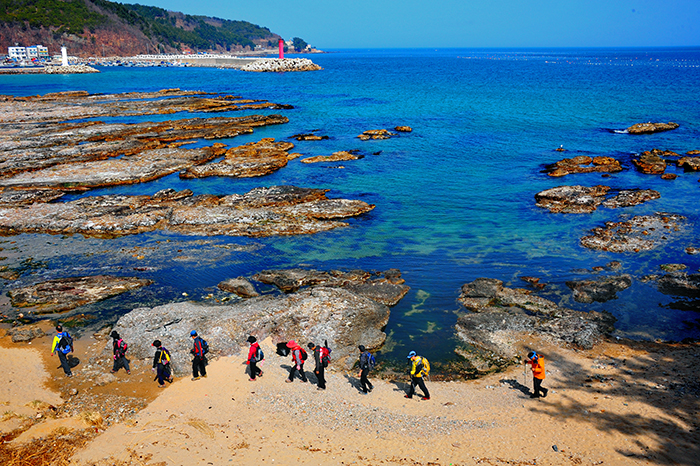
Intrepid adventurers enjoy the scenic view from the beach as they walk along Course No. 21 in the Yeongdeok section of the Haeparang Trail.
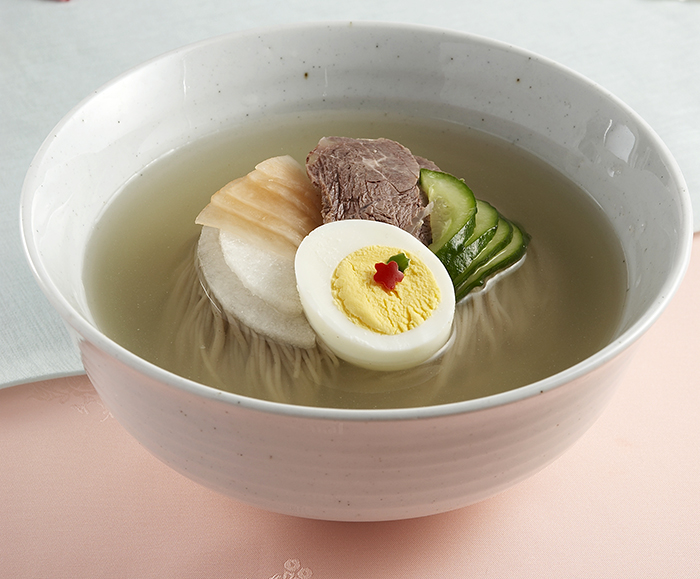
Naengmyeon (냉면)
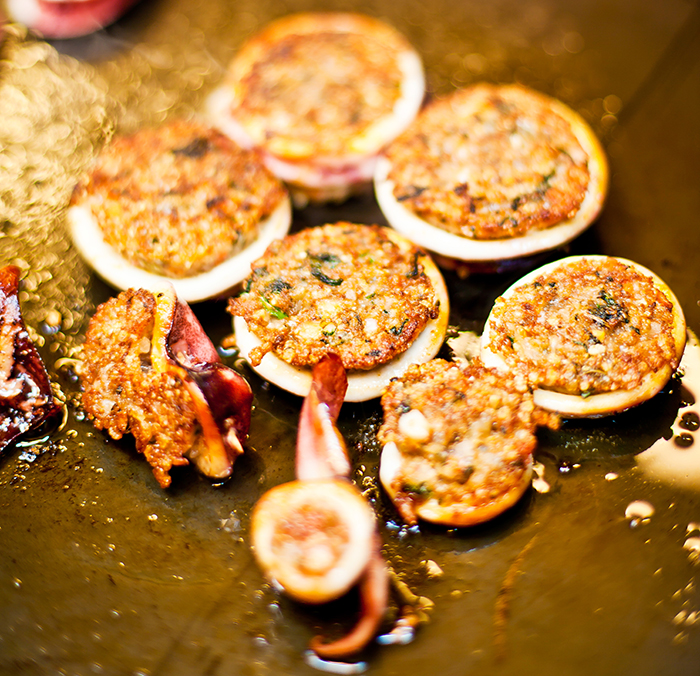
Ojingeo soondae (오징어순대)
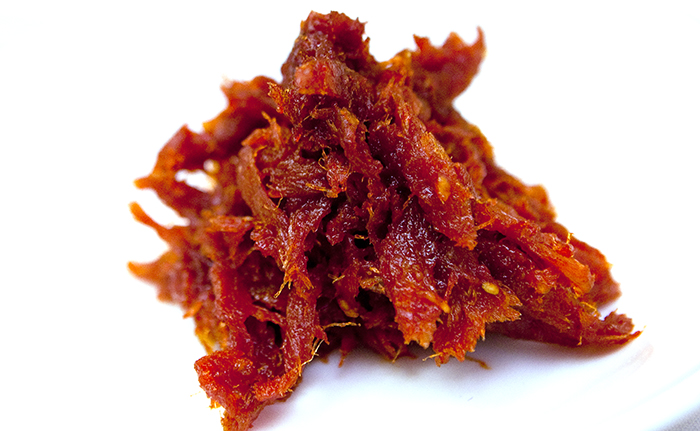
Myeongtae muchim (명태무침) or seasoned sliced pollock
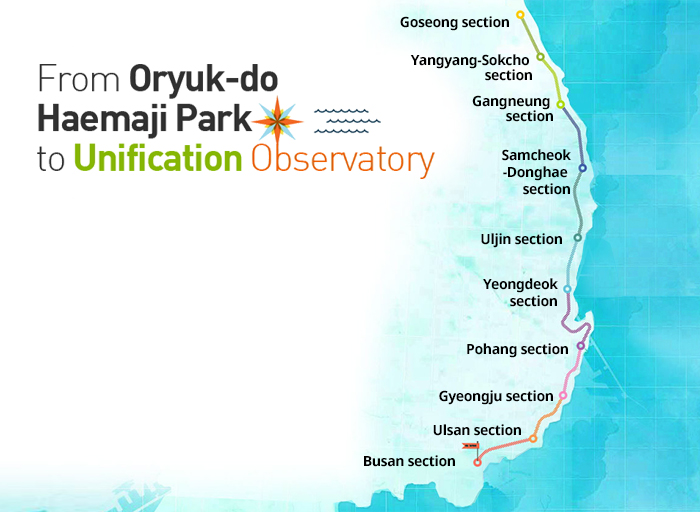
The map of Haeparang Trail
